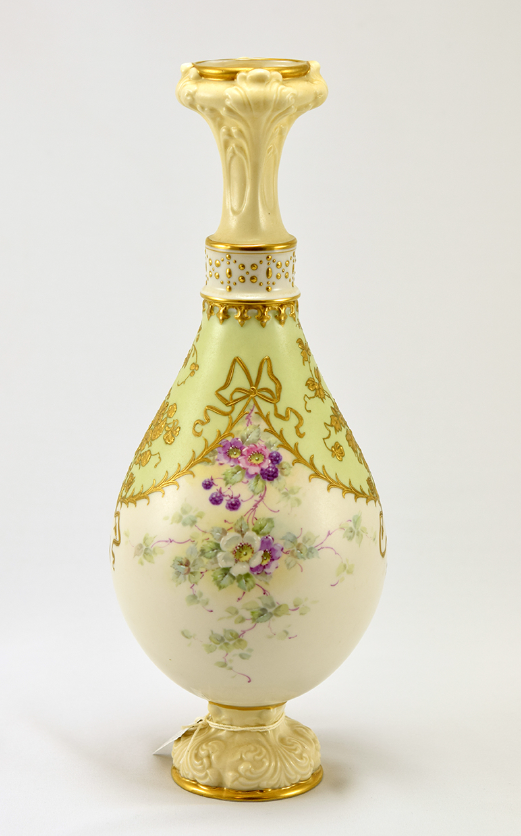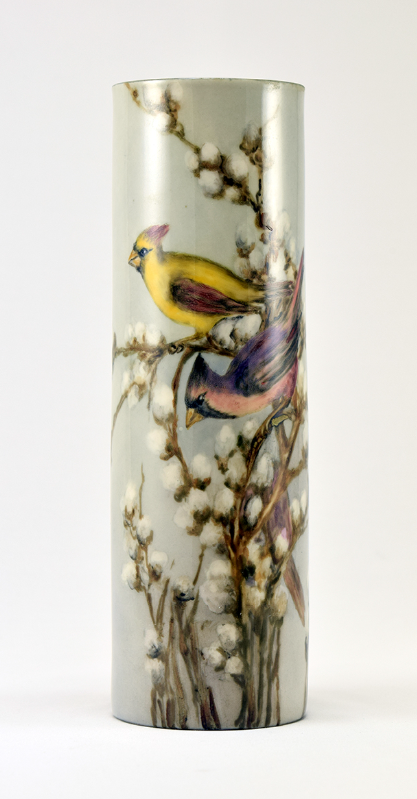


American Belleek
While the focus of the collection at MAPA is American porcelain art between the mid-to-late-20th century, we do have a small collection of American Belleek in the Museum, as well.
The story of American Belleek starts in Ireland in a town called Belleek. In 1857, the ultra-lightweight, translucent, pearly, iridescent glaze was being perfected by Jules Henri Brianchon. This Belleek, which is found in the Museum of American Porcelain Art, is a superior quality porcelain.
Upon learning that American manufacturers were trying to perfect the new porcelain, a few of the artisans who worked for Belleek in Ireland emigrated to America. They went from factory to factory assisting the Americans wherever they needed to get the quality desired for their American Belleek patterns.
These first examples of American Belleek were exact replicas of the Irish Belleek, possibly even daintier. Soon, however, American Belleek branched out in new directions, incorporating Oriental, Indian, French, Dutch and countless other designs and combinations.
The reign of Belleek in America lasted about 50 years, when many of the artisans passed away or newer artists, like Boehm and Ispanky, preferred the style of figurine art featured throughout the Museum of American Porcelain Art. These are the artists highlighted at MAPA.

